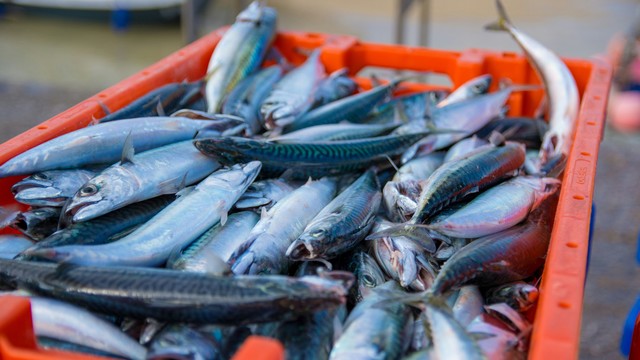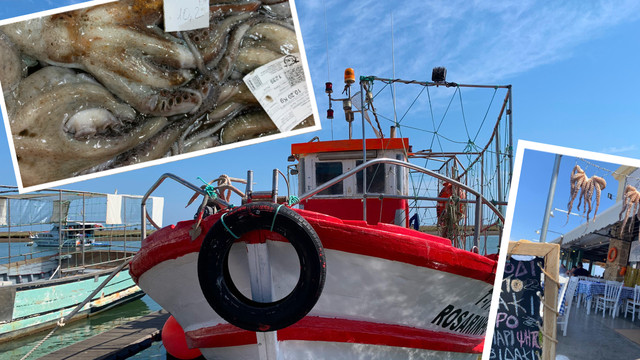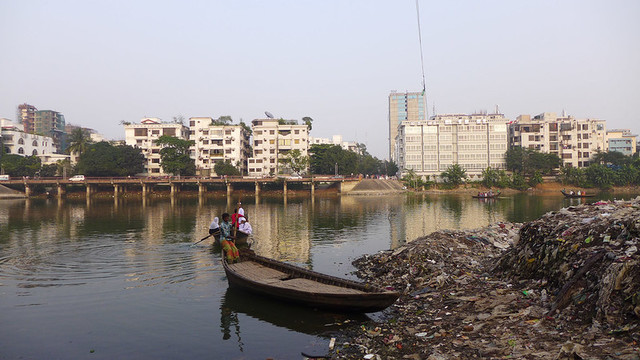Cooperation vs. competition over shared fish stocks
When fisheries straddle national borders, cooperation between countries to manage their shared resources sustainably and equitably is vital. Bangladesh and Myanmar have come together to work out the best way to do this for the hilsa shad, one of the region’s most commercially and culturally important fish.


Fishing boats ready for launch on the Bay of Bengal. Cross-boundary cooperation on managing fish stocks can prevent overexploitation (Photo: Brad Herman, CC BY-NC-SA 2.0)
It would be a strange fish if, swimming from one place to another, it recognised spatial boundaries set up for fisheries management. Fish are vulnerable. No matter how capable a country is of managing fish populations within its own coastal and inland waters, once fish cross national boundaries, they’re at the mercy of another country’s regime.
In these circumstances, cooperative management is a fundamental (yet rarely implemented) prerequisite of sustainable and fair fishing. This cooperation requires effective transboundary institutional structures, such as regional fisheries management organisations, bilateral commissions, or ad hoc cooperation agreements.
History (and fisheries modelling) tells us that when there isn’t cooperation, fishing will almost always lead to competition and overexploitation – think hake stocks shared by Angola, Namibia, and South Africa; the small pelagics of southern Peru and northern Chile; and Pacific salmon in Canada and the United States.
This competition not only reduces total net benefits from fishing, it also has winners and losers: while one country might maintain a sustainable fishery, another will likely see their stock collapse.
Talking about cooperation
At a recent knowledge-sharing workshop in Bangladesh under IIED’s Darwin-HilsaMM project, scientists, NGOs, and government officials from Bangladesh and Myanmar started a dialogue for cooperation over their shared stocks of hilsa shad. Hilsa migrate between marine and freshwater, forming an important fishery in the Bay of Bengal and surrounding countries – particularly Bangladesh, Myanmar, and India (together they account for around 90% of landings).
Each country manages its own hilsa stocks independently. However, transboundary recommendations have been made by IUCN and the GEF-funded Bay of Bengal Large Marine Ecosystem (BOBLME) project. The BOBLME project has produced a Strategic Action Programme, endorsed by all eight partner countries. Implementation is set to begin in 2020 and could help develop the institutions for cooperative hilsa management.
From knowledge sharing to joint working
Our hope is that last month’s dialogue will be the start of collaborative research and long-term information sharing between Myanmar and Bangladesh, leading eventually to a joint hilsa fisheries management plan.
Bangladesh has made real progress recently in its scientific understanding and management of hilsa, and claims to have boosted productivity by 150% over the last 15 years. The government attributes this to its ‘carrot-and-stick’ approach, which combines incentives with conventional regulations such as fishing bans and gear bans. In the workshop, participants from Myanmar learnt about the challenges and successes of these management approaches and how they might replicate them.
Current political tensions in the region could hamper progress towards cooperative management but a plausible and valuable first step (and a recommendation from the workshop) is for hilsa experts to form a transboundary hilsa working group, with a scientific, rather than political, remit.
Cross-boundary working
Phase 1 of the BOBLME project (2009-15) began to develop institutional arrangements for cooperation between Bangladesh, Myanmar, and India, but these were deferred. With endorsement from the Bangladesh and Myanmar fisheries departments, a transboundary hilsa working group could be established right away. Workshop participants agreed that India must be represented in the group, although perhaps not immediately as their share of the fishery is minimal.
Once formed, the group’s major challenge will be ensuring its own institutional sustainability. All Large Marine Ecosystem (LME) projects aim to establish a host country-funded commission to keep LME governance active after a project is delivered (see, for example, the Benguela Current Commission and its associated convention). Assuming the BOBLME project will establish a ‘Bay of Bengal Commission’, this could house the transboundary hilsa working group, helping to give it permanence.
Genetics or politics?
Overall, the knowledge-sharing workshop was positive. However, the conversation did turn again and again to the challenge of identifying genetically-distinct stocks of hilsa. There seems to be a strong drive in Bangladesh to demonstrate the existence of riverine stocks that do not leave the country.
The Bangladesh government has even claimed ‘ownership’ over hilsa, registering it with the World Intellectual Property Organisation as a ‘geographical indication product’ of Bangladesh. As one workshop participant put it, this is the equivalent of Norway claiming ownership over Atlantic salmon.
While genetic studies might reveal differences in migratory behaviour between stocks, which can guide management, they should not distract from the bigger picture: hilsa is a transboundary species requiring transboundary management. Effective monitoring and enforcement of sanctuaries and seasonal fishing bans in one country, for example, would be undermined if not deployed in others.
The Darwin-HilsaMM and BOBLME projects both provide opportunities to lay strong institutional foundations for the development of a cooperative management programme. Bangladesh and Myanmar are charting the right course; hopefully India will follow.




